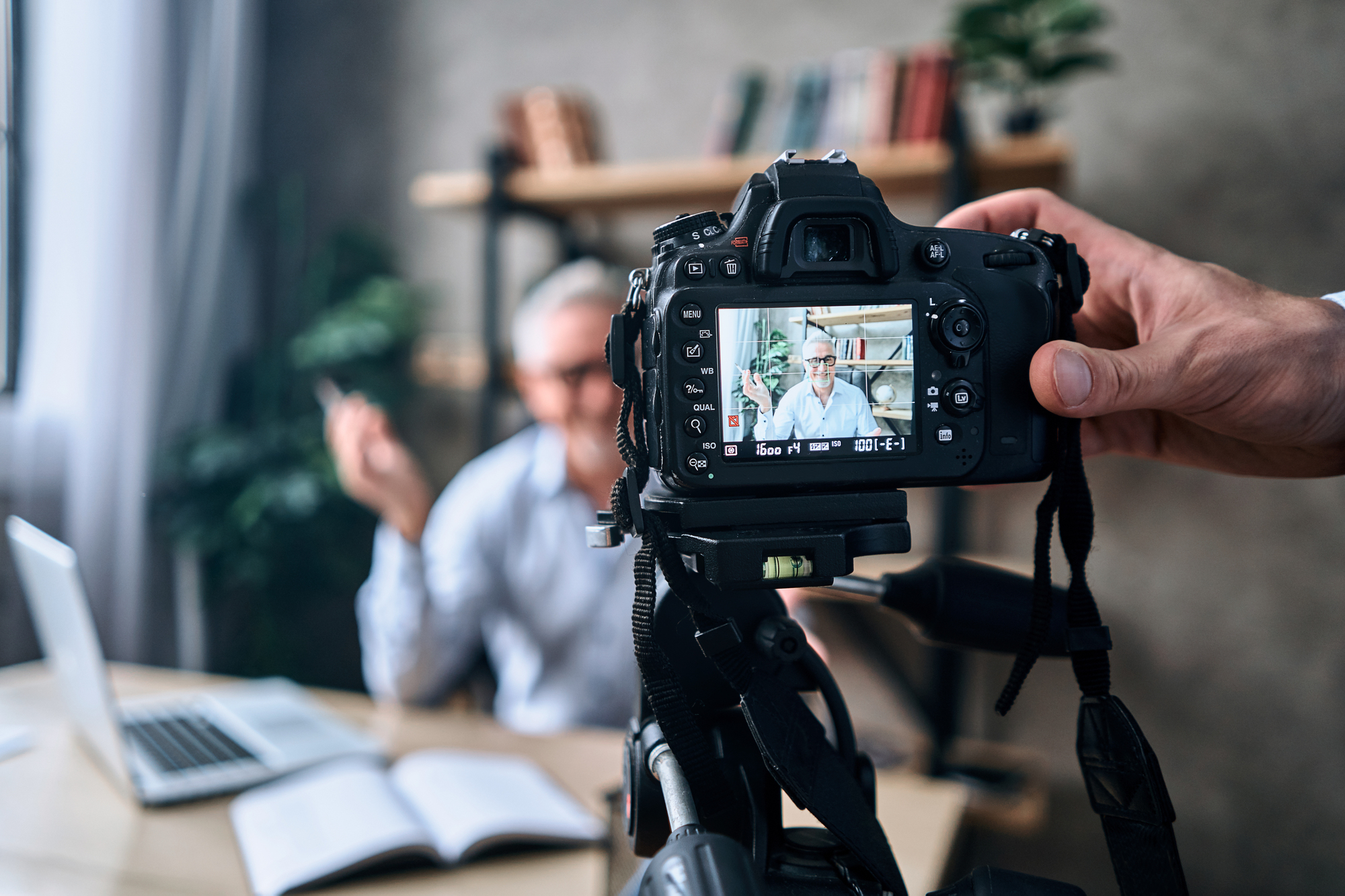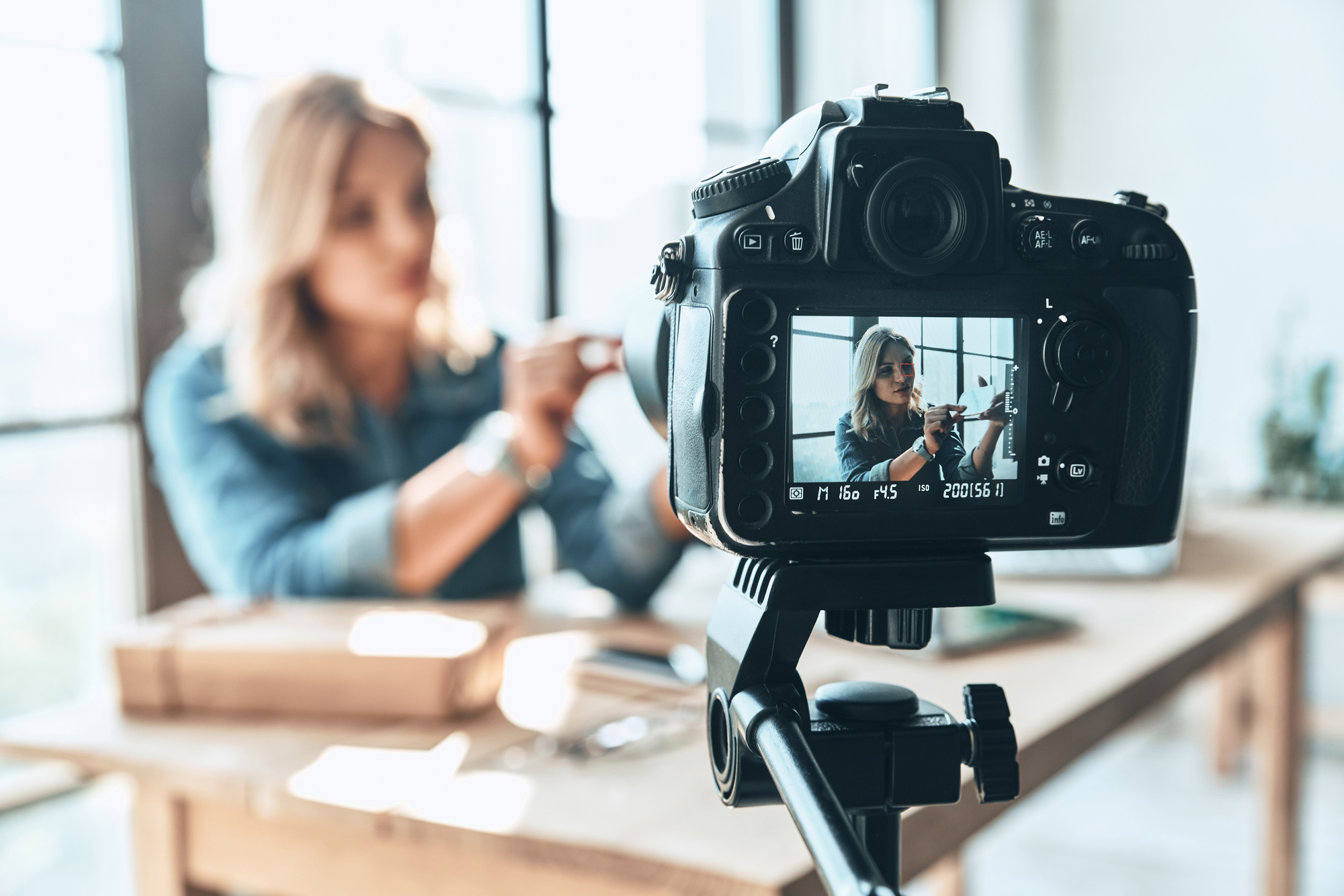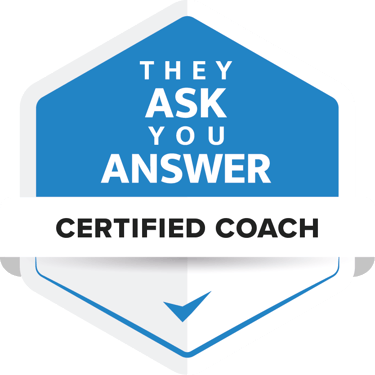8 tips for getting comfortable in front of the camera

You have started video within your company and you have been asked to appear in front of the camera as well.
You are not used to this and so you find it quite exciting.
All sorts of thoughts race through your mind:
- How do you look on video?
- Where do you leave your hands?
- What should you do if you lose your text?
- Can't a more videogenic colleague just do this?
I understand how you feel. As a coach and video trainer at Buzzlytics, I've helped several professionals in our TAYA Mastery program who, like you, were up against their first video. I coached and guided them to become more comfortable, step by step, in front of the camera.
In this article, I share eight practical tips that will help you feel more at ease in front of the camera. So by the end of this article you will have concrete tools to successfully get through your first video. With these tips, being in front of the camera will gradually become not only less scary, but maybe even something you look forward to.
Why many people find it exciting to be in front of the camera
First of all, it is good to know that it is perfectly normal to feel uncomfortable in front of the camera.
Most people are not used to seeing and hearing themselves as others do. This often makes it feel unnatural to see and hear ourselves reflected on video.
In addition, many people feel the pressure to appear perfect on camera. In a real conversation with another person, we are quicker to forgive ourselves for small mistakes.
But as soon as the camera runs, suddenly everything seems to have to be perfect. This is not necessary: the point is to inspire confidence in your videos, not to deliver an Oscar-worthy performance.
It is perfectly normal to feel uncomfortable in front of the camera.
Why it's important to be in front of the camera yourself
You may be thinking to yourself: I have a colleague who is a lot more videogenic than me. Can't he just stand in front of the camera in my place?
I advise against this for two reasons.
First, creating video for sales is about building trust with potential customers. To do that, they need to have seen the person they are meeting with on video beforehand.
Second, it is important to have the content expert himself or herself speak in the video. You are the knowledge expert and can best convey the content. This inspires more trust than if someone from marketing or sales does it.
8 tips to feel more comfortable in front of the camera
So to build trust, it is important that you yourself appear on camera as a content expert.
In practice, I see that it is usually a matter of "having to get through it," for people who find it exciting to be in front of the camera. With the right coaching and guidance, anyone can shoot a good video - yes, including you.
Below I share some tips to get you started.
1. Start with a smile
When people are uncertain in front of the camera, they often hobble for a while at the beginning to find their security.
My first tip is to pull that moment forward: stand firm and smile for three seconds. This has a huge impact on your appearance.
In doing so, it is good to know that what feels exaggerated to you may end up appearing quite normal on camera.
Anyone can shoot a good video with the right coaching and guidance.
2. Use your hands naturally
Many people do not know what to do with their hands in front of the camera.
If you don't think about this, it usually goes very naturally. But if you do think about this a lot, my tip is to quietly hold your hands in front of you, as if you were making a bowl.
From this position, you can easily make hand movements and also easily return to your starting position.
3. Keep going even if you make a mistake
If you make a mistake while shooting, you may be tempted to stop the camera and start over.
My advice in cases like this is to just keep going. That way you will get into a natural flow faster. Mistakes can be cut out, and sometimes something that felt like a mistake (a slightly longer pause, for example) turns out not to be a mistake at all in the end.
4. Take breaks to reflect
Furthermore, it is good to know that it is not a bad thing to leave a moment of silence in a recording when you are thinking. Sometimes that gives more peace in the video and you can just leave the pause in and otherwise you can always cut the pause out.
However, it is important to keep looking into the camera and smiling at these moments. So don't look away or up, as people often do when thinking.
It is not a bad thing to allow a moment's silence in a recording when thinking.
5. Make as many videos as possible
Another tip I want to give you is to make as many videos as you can. The more often you are in front of the camera, the more natural it feels, the better you get at it and the faster you can shoot videos. So "practice makes perfect" also applies to being in front of the camera.
6. Think of the camera as a person
Does it feel strange to you to talk to a camera, rather than a person? Then imagine that the camera is a person you are in conversation with, such as the person who is going to watch this video. How would you address this person if you were having a sales conversation with them?
Another option in the beginning is to ask one of your colleagues to stand close to the lens behind the camera so that you look at him and talk to him. This helps you see the camera as a person.
7. Ensure a neat appearance
Furthermore, it can help to make sure that you look groomed and that your surroundings are tidy. So put on an outfit in which you feel confident, take a look in the mirror before the shoot starts and tidy up your surroundings so that there are no distractions for yourself, as well as your viewers.
8. Re-record if necessary
The last tip I want to give you is that you can make a new recording if, after one recording, you feel that it could be even better. So you do this only after the recording is finished and not in between.
For example, the other day I recorded a landing page video of about one to two minutes with a client. We made a few recordings and they got better and better as the client got better and better at his text. We were also able to do this easily because the video was only so short.
Make a new recording if you feel a recording could be even better.
Practice makes perfect - even with video
It's perfectly normal to be unsure in front of the camera at first. But with regular practice and applying the tips in this article, you'll find that it feels more and more natural. Eventually, you'll see that video is a powerful tool for building trust with your prospects.
At Buzzlytics, in our TAYA Mastery program, we teach professionals how to create videos that build trust and therefore bring in sales.
Want to learn more about how to create effective videos within the They Ask, You Answer philosophy? Then read these articles as well:
Related articles
July 4, 2024
-
Reading time: +/- 9 min
August 1, 2024
-
Reading time: +/- 5 min








